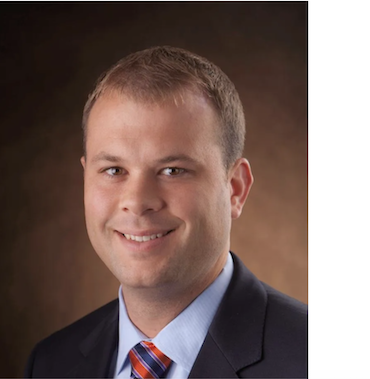
Stanley Martin was among the small group of private builders that grew during the recession. It did so by building smaller, more affordable houses to differentiate from the competition’s larger mansions and by recognizing that Washington, D.C. metro buyers were gravitating toward move-in ready and under-construction houses when many builders broke ground only after they had an order. In 2013, the 47-year-old company merged with Piedmont Realty & Construction, in Charlottesville, Va., to begin its southern expansion.
Q: What are the pressing challenges in taking a historically one-division builder and becoming a multidivision company?
A: What we learned was that integrating two cultures is unbelievably hard and takes patience and constant communication. There are numerous integration and strategy issues that need to be dealt with that are whimsically determined to be part of “synergy” and “combination costs” pre-merger. We were fortunate, in that the team that we acquired had great character and passion for the business. However, in our industry, thousands of small decisions must be made correctly each day, and aligning around a single mission was where we experienced the most difficulty. We have worked through an IT conversion, architectural differences based on market preferences, land strategy, marketing alignment, significant expansion and training of our trade partner base, and how we communicate as an expanded team. All of this is extremely tedious work that doesn’t inspire many people, but is necessary in creating a great homebuilder.
Today, we have worked through many of the integration issues and are performing at a much higher level. I truly believe that we have managed through the “storming” and “norming” phases of the transition, and are entering the “performing” phase. That 2013 acquisition has lead Stanley Martin into the Richmond, Va., and Raleigh, N.C., markets. It takes a good deal of planning and investment to move into a market and convince the community that you are committed to the area long term. It takes a great local team to help you avoid dumb tax that can come from being the newest entrant into the market. It takes constant training and support from your company veterans to assure that the teams are managing to the company’s expectations and following procedures. I believe that one of our best investments will be the recent investment we made in one of our most senior employees documenting and training on our procedures companywide. For nearly 50 years, Stanley Martin operated entrepreneurially and nimbly, relying on our company DNA and internal coaching as our training. Today, we are a much larger company and to be great, we need to create broad procedures that allow for the same entrepreneurial spirit to pervade the company, while providing the teams building our company with solid training.
Q: What lessons did you come away with having gone through the industry’s worst financial crisis?
A: As a young financial manager at large public builder, and later at Stanley Martin, I realized that there is a real playbook that needs to be followed with urgency to allow for the greatest success of the company. We are in a very cyclical business, but the Great Recession was more than anyone saw coming. To have this occur early in my career was a tremendous learning experience and prepared me well for almost anything that will occur in my future in the industry. While the industry claimed many good companies and employees, the respect for market dynamics and the learning opportunity is one that I cherish. Of the lessons that I learned during the downturn, these are the ones that I consider most important for a severe correction:
- Cash is king. Work hard to generate cash and cease all new financial commitments earlier than you want to.
- Be honest and early with communication to your financial stakeholders, industry relationships, employees, and vendors. Most importantly, be honest with your assessment of the business and your sales prices.
- Eliminate waste quickly in the construction process. This is always a goal, but particularly in material selection. Build what people will pay for.
- Take the long view. Be prepared to reinvest when the time is right, and build a war chest of cash. There is a time to reap and a time to sow.
- Get creative with your business model to help unnatural holders of assets. Use your experience to create more value for your company.
- Consider the cyclical nature of the industry when times are good. We always desire growth and being invested is a natural instinct, but you can create less risk on your balance sheet when times are healthy.
- Work hard to protect your “A Team,” by right sizing your business operations early. Some members of the team are value creators. A dollar saved is a dollar earned. Work hard to keep them part of the team.
Q: How do you go about creating strong relationships with Stanley Martin’s external stakeholders and customers?
A: I credit all of my thoughts on building a strong network and communicating with my stakeholders to my core values and the upbringing that my parents provided to me. Along the way, I have had several great mentors and coaches as well. My core belief is to treat people the way you want to be treated, to be honest and ethical, to communicate bad news quickly and privately, and to be a good steward of what you have been given to manage.
Throughout the downturn, things weren’t always pretty, and the news wasn’t always what others wanted to hear. Getting in front of issues and communicating them with integrity has helped me create lasting relationships in the industry. Being available and not hiding from conflict or disagreements are what people remember after the communication has been digested. We are in a very small industry, when you consider the people that you come in contact with. Your personal reputation is worth far more than any deal or issue. When times are good, this is obviously much more fun. As the market continues to recover, the communication should remain the same, but is obviously more upbeat.
As the former chief financial officer of Stanley Martin, I worked hard to document major transactions that our auditor should know about. I communicated regularly with financial partners and investors to provide them insight into the business. I am a huge proponent of communicating with vendors and eliminating their waste in our processes, by using technology and other systems to make their lives easier. As the chief operating officer, I work with our internal teams to create strong goals and alignment around our mission, and by trying to eliminate waste and frustration in the company. For me, the end goal is to create a team environment, when political noise is eliminated, and a high performing and willing support network is created.
This is a longer version of the interview that appeared in the May 2015 issue of Professional Builder.







